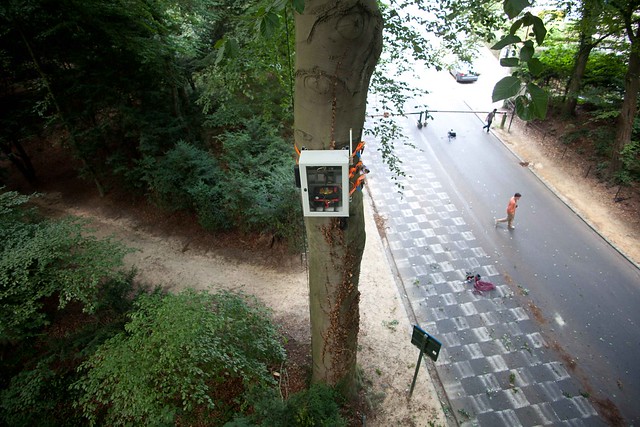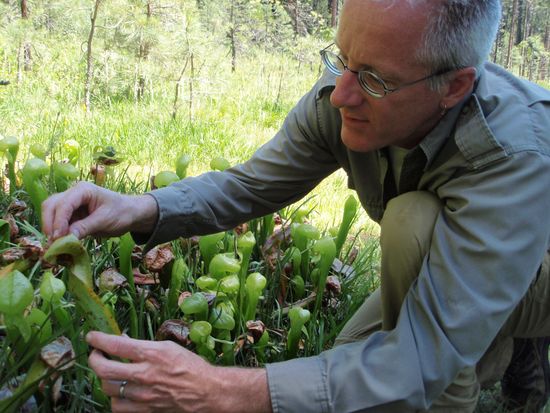Decades ago, lush stands of Darlingtonia californica — emerald plants coiled like fanged cobras ready to pounce — grew at this spot [Quincy, CA] in the northern reaches of the Sierra Nevada.
Deep in the ravine, the air is hot and dead. Pieces of bark that have sloughed off trees make every step a danger — nature's equivalent of a thousand forgotten skateboards cluttering a driveway. Slate tinkles underfoot, and the ground feels like stale angel-food cake: stiff yet porous.
[Barry] Rice, a botanist at UC Davis, is not the first to hunt the cobra lily here in Butterfly Valley. In 1875, amateur botanist Rebecca Austin fed the plants raw mutton and carefully observed how they digested it.
Yet to this day, much of the plants' biology and habitat remain unknown — which is why Rice is here, trying to find established populations.
Near the bottom of the crevice, the ground becomes moist. The air cools and softens. This is where the cobra lilies would be. “When you see them, they look almost like animals,” Rice says.
But there are none to be seen.

